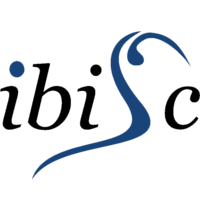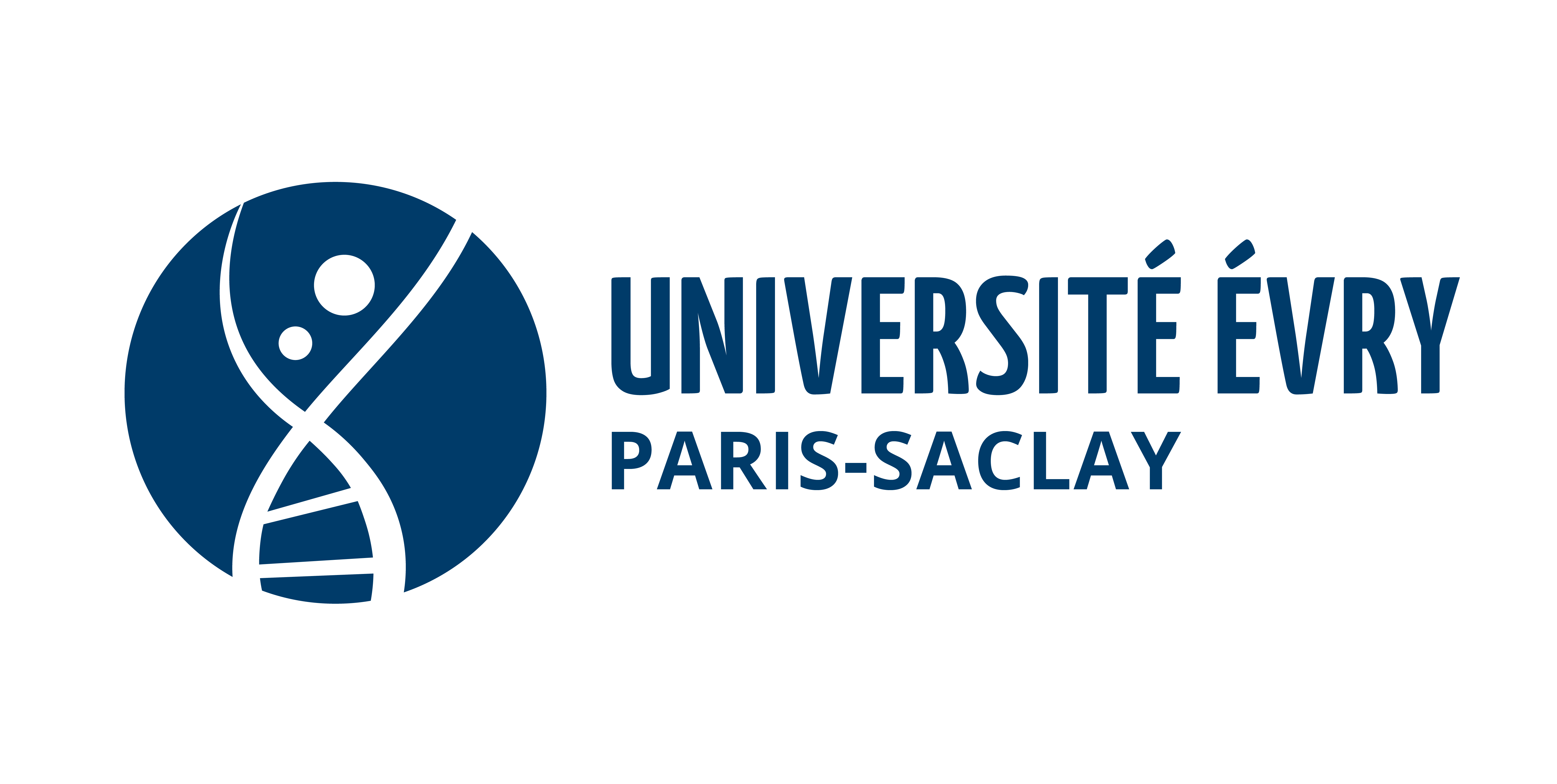Guillaume Bouyer
Associate professor @ ENSIIE
1, square de la résistance
91025 Evry Cedex
+33 1 69 36 74 60
guillaume.bouyer@ensiie.fr
Researcher @ Lab. IBISC, team IRA2
Université Évry Paris-Saclay
IBISC, EA 4526
40, rue de Pelvoux - CE1455 Courcouronnes
91020 Évry Cedex
+33 1 69 47 06 22
News
- 🔥 20/05/2025: Our research team will be present at Paris Saclay Spring 2025 to present our ARROW augmented reality gait rehabilitation project. Meet us at the SATT stand for discussions and demo !
- 📢 09/04/2025: New PhD and internship offers ! (see Jobs section)
- 📢 07/04/2025: The ARROW project team will be present at the Journées Innovation at Université Evry, organized with the MIT
- 🎓 12/02/2025: Louis Lafuma will defend his PhD "Multisensory feedback for virtual object manipulation in augmented reality" at Lab IBISC (14h)(Holofeedback project with Asobo/Holoforge)
- 🎮 05/02/2025: Students' projects from the Video Games and Digital Interactions (JIN) specialization have been presented. Details and videos will be available on the JIN website
- 🎮 29/11/2024: Unijam 2024 will take place à Télécom SudParis. This will be the 11th game jam that we organize for our Video Games and Digital Interactions (JIN) students. Event, games and video to follow on itch.io soon.
- 📢 29-30-31/10/2024: Our laboratory co-organizes the AFXR days 2024 at Evry. It will be an opportunity for the french academic and industrial community to exchange and share advances and best practices through scientific communications, calls for projects, feedback and new needs in industrial applications. Come and join us!
- 📢 27/06/2024: Our project ARROW supported by the SATT Paris-Saclay will be demonstrated at the Instant SATT event at Orsay.
- 📝 30/05/2024: Our study on the use of audio feedback in Augmented Reality to induce weight sensations has been accepted for publication and will be presented by Louis Lafuma at ICAD 2024 in June.
- 👩🏼🦽 27/05/2024: I'm taking part in the Mobility and Virtual Reality summer school co-organised by the Faculté des Sciences du Sport of Aix Marseille Université. The seminar will feature rich discussions and workshops on new technologies and the issues related to disability and rehabilitation. Video clip.
- 👩💻 02/2024: Several internship offers are still available at IBISC, see dedicated webpage
- 🎮 07/02/2023: Students' projects from the Video Games and Digital Interactions (JIN) specialization have been presented. Details and videos will be available on the JIN website
- 🎮 26/11/2023: Unijam is the 10th game jam that we have organised for our Video Games and Digital Interactions (JIN) students. Games and video available on itch.io
- 🎯 10/10/2023: Our project ARROW has been selected as part of the Tech Transfer Program 2023 by the SATT Paris-Saclay. Over the next 2 years, we will improve our solution, then hopefully transfer the technology to an industrial company and bring it to market.
- 📝 29/08/2023: Our study on the influence of hand representation on a grasping task in augmented reality within the Holofeedback project has been accepted for publication at ICMI 2023 (9-13/10/2023) in Paris
- 🏆 06/07/2023: Anne-Laure Guinet has been awarded an accessit to the 2023 "Geometric and Graphic Computing, Virtual Reality and Visualization" thesis prize, organized by the GDR IG-RV
- 🚀 01/02/2023: Launch of the ANR MASTERS project
- 🎮 01/02/2023: Students' projects from the Video Games and Digital Interactions (JIN) specialization have been presented. Details and videos are available on the JIN website
- 🩺 12/10/2022: Presentation of various research activities of our team in the health and training field at the 5th Call for innovative ideas organized by Genopole and CHSF : https://www.genopole.fr/temps-forts/actualites/appel-a-idees-5-lancement/".
- 🩺 01/10/2022: Presentation of the CESAAR-AVC project in a symposium organized by our partner: "20 years of therapeutic advances at the Les Trois Soleils clinic".
- 📝 01/09/2022: Our final protocol for the ARRoW-CP project has been published in BMJ Open
- 📝 30/08/2022: Our study on the use of visual feedback in Augmented Reality to walk at predefined speed has been published in IEEE TNSRE (ARRoW-CP project)
- 📢 3-4-5/06/2022: The CESAAR-AVC team will participate in the event organized by Universcience "Video games and health" in the e-LAB Jeu vidéo at the Cité des sciences et de l'industrie. Playful experiments, conferences and stands aim to raise awareness of the positive use of video games in the field of health, particularly in certain neurodegenerative diseases. Full program and replays here.
- 🏆 24/05/2022: Anne-Laure Guinet was awarded the 1st prize at the EACD Early Career Researcher Award for her work on the (ARRoW-CP project). Congrats!
- 📢 17-18/03/2022: Our Mixed Reality team IRA² will present our most recent projects at Virtuality 2022, in particular the advances in our post-stroke rehab project CESAAR-AVC and other e-health related research
- 🎓 16/03/2022: Anne-Laure Guinet will defend her PhD "Multimodal Sensory Feedback in Augmented Reality for Gait Rehabilitation in children with Cerebral Palsy" at Lab IBISC (14h)(ARRoW-CP project)
Research
Research themes
Virtual & Augmented Reality, 3D Interactions, Multimodal Feedback, Adaptativity, Rehabilitation.
My research focuses on assisting users in Virtual and Augmented Reality applications, in order to improve their comfort, performance or understanding in the various tasks they are required to perform (navigation, selection, manipulation, application control, etc.). The methodology follows a user-centered design, ranging from 3D interaction modeling to prototype development and evaluation. My work has been applied until 2014 mainly to bioinformatics and virtual exploration. Since 2015, applications have diversified to driving simulation, rehabilitation, or medical simulation. The research topics followed in recent years concern:
- Analysis of user behavior
- Creation of tools to measure performance or motor activity in a virtual environment
- Detection of user's intentions
- Multimodal feedback: specific use of visual, audio and haptic feedback to
- Communicate information useful to the task (e.g. virtual guides)
- Reinforce sensory perceptions during interactions
- Improve the performance of a motor activity
- Game mechanics
- Design of exergames for improving motivation and adherence in rehabilitation
- Design of a virtual coaching
- Adaptability of interactions
- Creation of decision tools based on knowledge representation and reasoning techniques
- Creation of automated difficulty management algorithms
Current and latest projects
ANR MASTERS (2023-2027)
This project called "Controlling Self and the Other under Emotional Tension, Resources Restrictions and Stress" aims to use VR to train law enforcement officers, military personnel, health care personnel, and firefighters to cope with stress and regulate their emotions. When facing a violent / aggressive / menacing individual or a panicked victim, the learner will be trained to maintain a high level of self-control and attention, to slow down the sequence of events, enhance situational awareness, conduct proper threat assessments, and select and produce appropriate verbal and nonverbal behaviors. This transdisciplinary project brings together 8 partners in computer science, mechanics, human-computer interaction, mathematics, philosophy, psychology, physiology and medicine: LMEE (Univ. Evry), IBISC (Univ. Evry), HEUDIASYC (CNRS, UTC), LS2N (CNRS, IMT Atlantique), I3SP (Univ. Paris Cité), PSYCLE (Univ. Aix-Marseille), LNC (CNRS, Univ. Aix-Marseille), and IRBA (Health Service of the French Armies).
Holofeedback (2021-2024)
The objective of this CIFRE project with Holoforge Interactive is to contribute to improve interactions with Mixed Reality holograms, especially in the context of cooperation. In particular, we will explore an approach based on the addition of multimodal (visual, audio and haptic) sensorimotor feedback in order to enhance the users' experience and thus the efficiency of their tasks.
ARRoW-CP (2018-2022) / ARROW (2024-2026)
IBISC and the Poidatz Foundation are conducting a research project on gait rehabilitation after multilevel surgery for children with cerebral palsy. Our objective is to design a complementary tool to traditional physiotherapy, which allows the increase of the "quantity of walking" (endurance and autonomy), in autonomy, in a real environment and with the active participation of young patients, while ensuring the improvement of the "quality" of walking (kinematic and dynamic parameters: walking speed, step length, changes in direction and rhythm, etc.). We believe that an "augmented rehabilitation" solution can address this problem, in the form of an augmented reality video game at the scale of a rehabilitation centre. First, the gameplay elements will reinforce the motivation of young patients to walk freely. Then other visual and audio feedback coupled with movement measurements, will be designed to try to improve the quality of the walking parameters.
ARROW has been selected as part of the Tech Transfer Program 2023 by the SATT Paris-Saclay. By 2025, we will be improving our solution, transferring the technology to an industrial company and hopefully bringing it to market.
CESAAR-AVC (2019-2022)
Collaborative project between the IBISC laboratory and the Rehabilitation Center Les Trois Soleils. The objective is to design, develop and evaluate a system of upper limb self-reeducation assistance after stroke, using Virtual Reality and video game techniques. This tool is intended to be interactive, easy to use and inexpensive. A major issue is to improve compliance with the rehabilitation program through motivating exercises that adapt to patient performance. The first game allows to practice the pronation-supination movement of the wrist (amplitude, speed, precision and posture).
Teaching
Jobs offers @ IBISC Mixed Reality team
Postdoc & Research Engineer Positions
PhD
Assistance pédagogique en réalité virtuelle : supervision et intervention temps réel du formateur(Appel à Bourses de thèses PEPR Ensemble)Stimulations et feedbacks audio-visuels pour la marche en réalité augmentée – Application à la rééducation(Concours Blanc Ecole Doctorale)- See other offers @ IBISC webpage
Research and End-of-study Internships
Stimulations et feedbacks audio-visuels pour la rééducation de la marche en Réalité Augmentée- See other offers @ IBISC webpage


